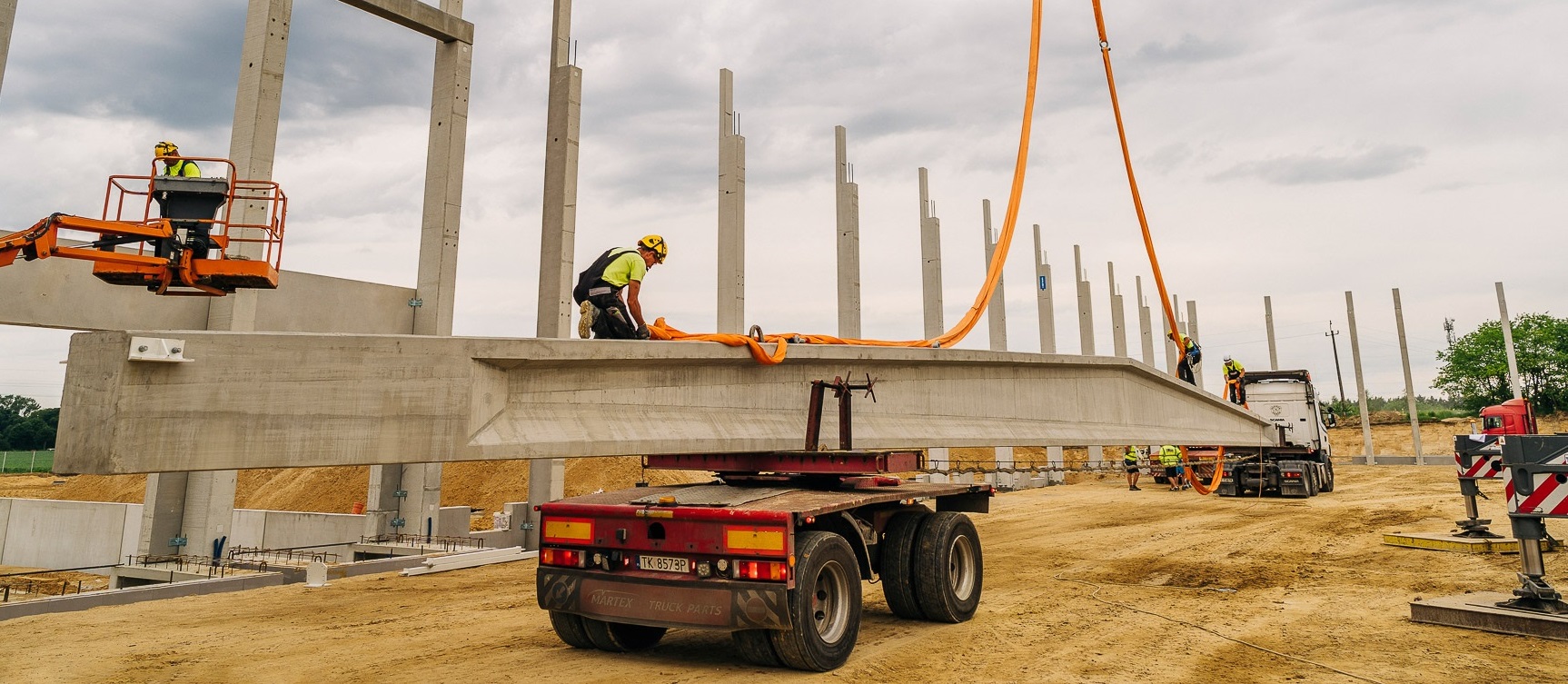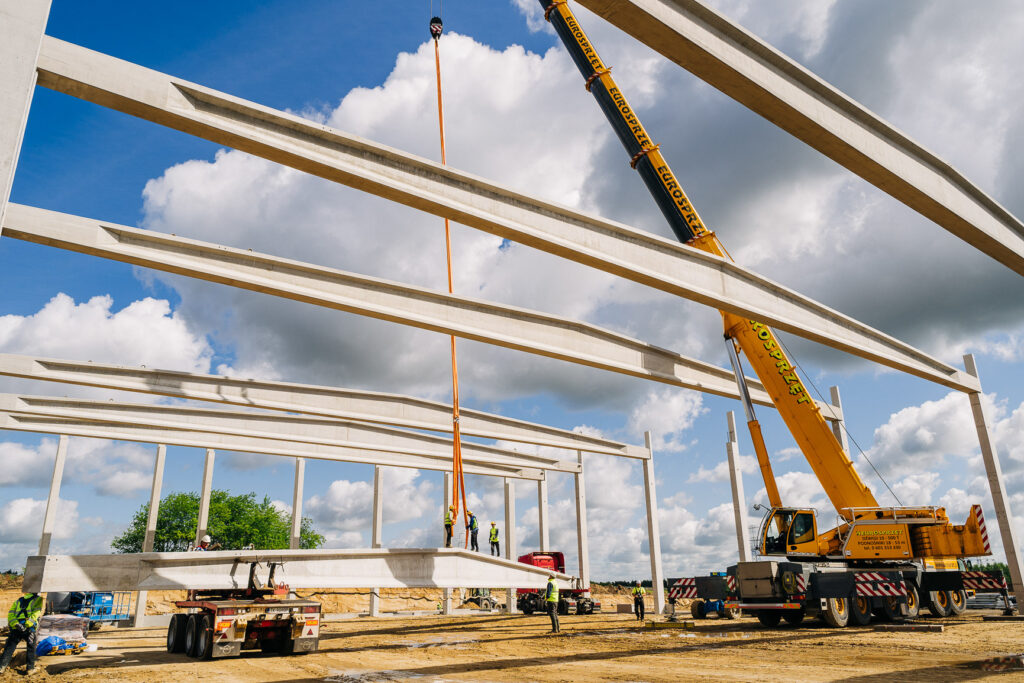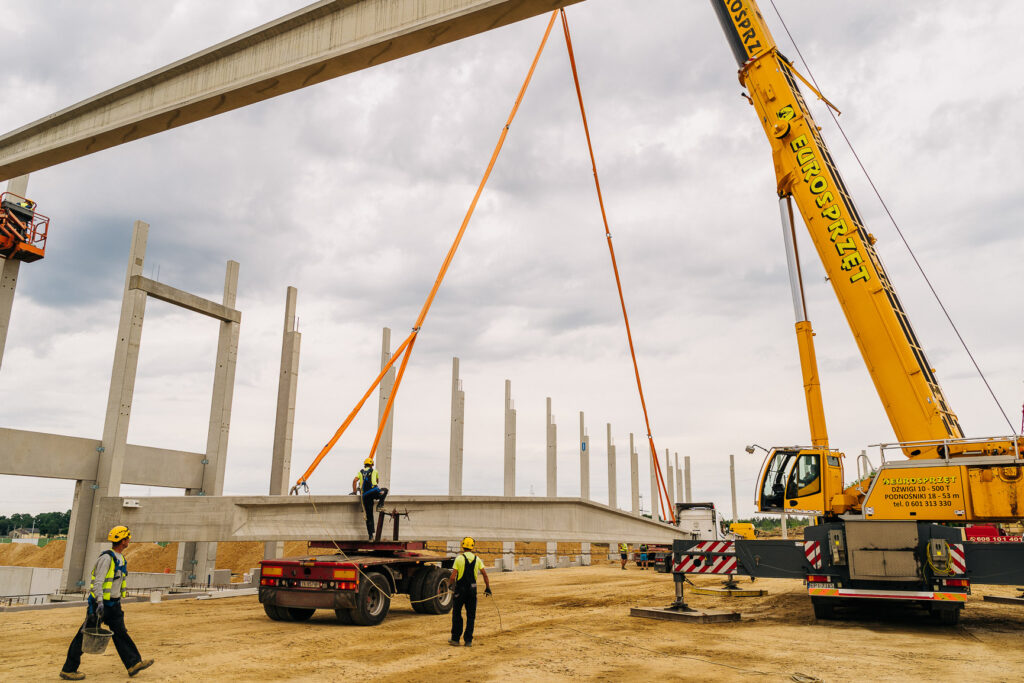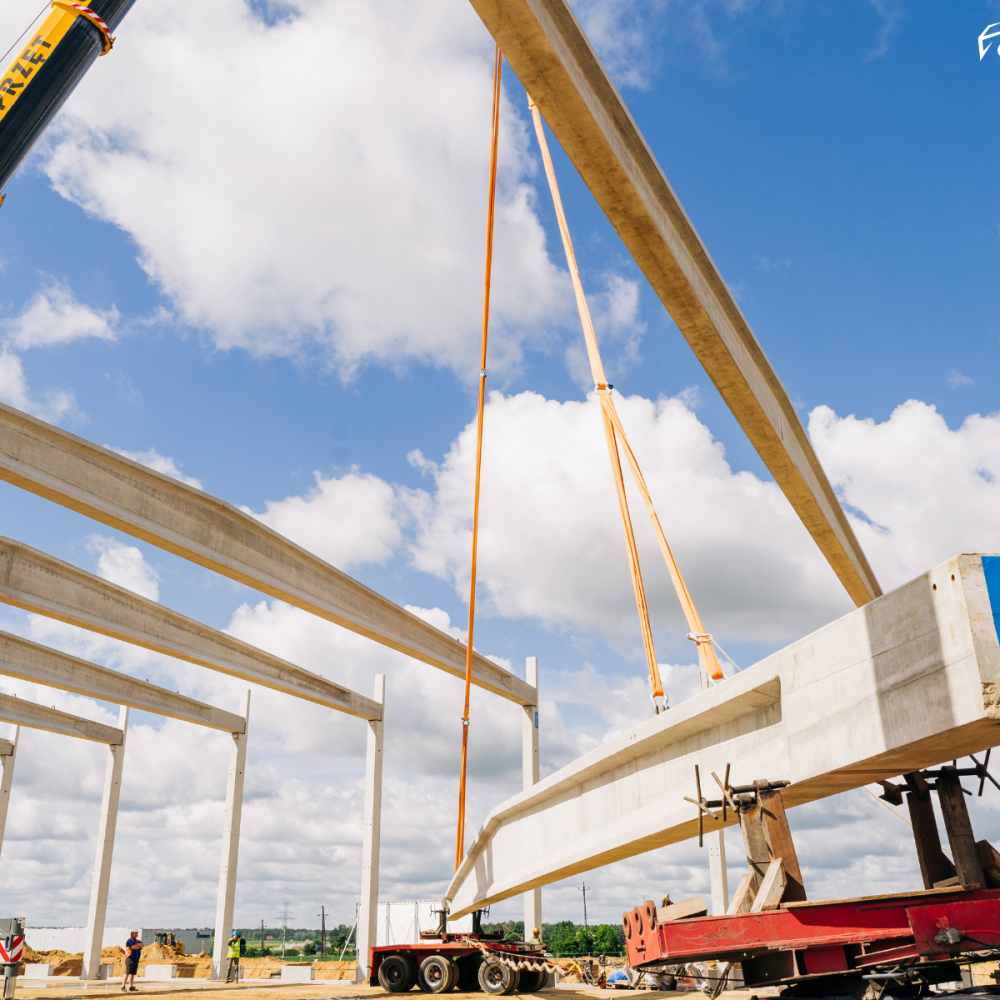
Oversize transport – regulations
With the rapid development of technology and digitalisation, the last few decades are now building faster, higher, overcoming greater and greater spans. This situation poses challenges for logistics, as ever-larger components, equipment and machine parts have to be transported to the construction site. The question to be asked is what is oversize transport? What is it linked to? What rules does it fall under? Oversize transport is referred to as abnormal transport in the Road Traffic Law and refers to the transport of loads that, together with the vehicle or combination of vehicles, exceed the permitted dimensions or weight.
Oversize transport is permitted provided that:
- a permit, of the appropriate category, is obtained for an oversize transport vehicle use,
- the conditions of passage specified in the said permit are complied with,
- piloting of the oversize transport is ensured by the required number of vehicles that are equipped and marked as specified in the regulation on the piloting of oversize vehicles,
- the driver of the oversize vehicle exercises particular caution.
Find out what the load limits are, who issues oversize loads permits, what types of permits there are and when an oversize load pilot is not required in the remainder of this article.
Oversize transport – what dimensions?
Oversize cargo transport refers to vehicles or vehicle combinations that, together with their load, exceed at least one of the values:
- 2.55 m in width;
- 4.0 m in height;
- 16.5 m in length;
- 40 tonnes of total permissible load weight including fuel and driver.
The provision that the cargo carried must be indivisible is very important. The law defines it as a load that cannot be split into two or more smaller loads without disproportionate cost or risk of damage. This means that, for example, a 16 tonne vehicle can carry one item weighing 30 tonnes, but it is not permitted to carry two items weighing 15 tonnes each. An exception is made for oversize vehicles that have obtained a category I permit. Vehicles in this category may carry a split load.
At Commercecon, oversize transport is used to deliver prestressed concrete roof girders, which are up to 34-36 m long, to the construction site. These therefore exceed, by far, the limit values for the dimensions of the load.

Oversize transport permits
The Road Traffic Law distinguishes five categories for the movement of non-standard vehicles on the road. The criterion for the division of these categories is the dimensions, weight or axle loads of the oversize vehicle. The characteristics and conditions for the distribution of permits are set out below:
- Category I – issued for the passage of a non-standard slow-moving vehicle, an agricultural tractor or a set of vehicles consisting of a slow-moving vehicle or an agricultural tractor and a special trailer. The length, height, axle loads and actual total weight do not exceed the road limits. The width of the vehicle must not exceed 3.5 metres. Permit issued for a period of 12 months by the administrator of the road on which the vehicle is to be driven.
- Category II – vehicles with axle loads and actual gross weights not exceeding the permissible limits. Not exceeding 3.2 m in width, less than 4.3 m in height and less than 15 m in length (for a single vehicle) and 23 m in length (for a set of vehicles). The permit is issued by the district governor of the place where the transport begins and, in the case of entry into Poland, by the head of the customs and tax office. It allows transport on public roads.
- Category III – vehicles with axle loads and actual gross weights not exceeding the permissible limits. Not exceeding 3.4 m in width, up to 4.3 m in height, and less than 15 m in length (for a single vehicle), 23 m in length (for a combination of vehicles) and 30 m in length (set of vehicles with turning wheels). The permit is issued by the General Director of National Roads and Motorways and, in the case of entry into Poland, by the head of the customs and tax office. The permit authorises you to drive on national roads.
- Category IV – oversize transport using vehicles with axle loads no greater than the permitted ones. Actual total weight up to 60 tonnes. The load width not exceeding 3.4 m (for a single carriageway) and 4.0 m (for motorways and highways), a height of less than 4.3 m and a length of less than 15 m (for a single vehicle), 23 m (for a set of vehicles) and 30 m (a set of vehicles with turning wheels). The permit is issued by the General Director of National Roads and Motorways.
- Category V – oversize transports of vehicles with axle loads exceeding permitted values. Dimensions and actual total weight greater than those listed in categories I to IV. The permit issued for single or multiple journeys on public roads, at a designated time, on the route specified in the permit. The permit is issued by the General Director of National Roads and Motorways.
Category II-IV permit for oversize transport shall be issued for the period indicated in the application: one month, 6 months, 12 months or 24 months. The permit shall be issued upon application by the entity concerned. The application shall be accompanied by proof of payment of the permit fee. Please note that in case oversize transport, you must carry a valid permit and show it to the authorised officials for review.

Oversize transport pilot assistance
Oversize transport is undoubtedly a difficult and complex undertaking. Due to the considerable size of the loads, the oversize transport requires the pilot assistance. In accordance with the regulation on pilot assistance for oversize vehicles:
- An oversize vehicle that exceeds one or more of the parameters:
1) vehicle length – 23 m,
2) width – 3.2 m,
3) height – 4.5 m,
4) total weight – 60 t
should be accompanied by a single pilot vehicle (this includes a set of activities performed on the road by the pilot using the pilot vehicle).
- An oversize vehicle that exceeds one or more of the parameters:
1) vehicle length – 30 m,
2) width – 3.6 m,
3) height – 4.7 m,
4) total weight – 80 t
should be accompanied by two pilot vehicles moving in front of and behind the oversize vehicle.
- Non-standard vehicles moving in a column should be assisted by two vehicles.
- The pilot vehicle should be equipped with:
1) a marking plate for the pilot vehicle, the model of which shall be determined by the Regulation,
2) two yellow flashing lights,
3) means of direct radio communication with piloted vehicles,
4) sound equipment.
The piloting should be done in such a way as to ensure safety and minimise traffic obstructions that may arise when piloting a non-standard vehicle.



